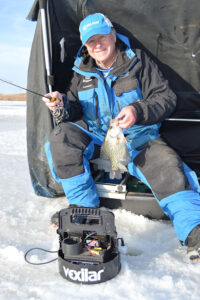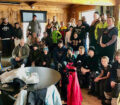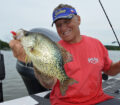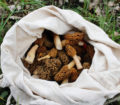By Bob Jensen
Fishing the Midwest Fishing Team
People who fish, whether in open water or through the ice, often try to learn what they can do to catch more fish. Maybe it’s a lure, a lure color, or the way the lure is moved. Maybe it’s the type of minnow or the size of the leech that’s on your hook. Those are all important considerations, but the reality is that there usually is no one special thing that we can do to catch more fish.
However, there are a bunch of little things that will enable us to be more successful on open water or the ice. Following are some small things that can have a positive impact on our ice fishing catches. You might be surprised at some of them, but when put into practice, you might also be surprised at their effectiveness.
John Crane is an angler who notices little things that help him catch more fish. J.C. says that when he’s ice fishing, he moves from hole to hole with some equipment in a bucket, and when he stops at a hole to fish, he sits on the bucket. He says that how he sits on the bucket is an important consideration. A sonar is a very important tool for determining if fish are present and how they respond to a bait.
J.C. positions himself so that his body is between the sonar unit and the sun.The Vexilar FLX-28 that he uses is easy to see when the sun is shining on it, but when it’s shaded with J.C.’s body, it’s even easier to see. A small detail but an important one.
Here’s another idea from Crane for bucket-sitters. If there’s some wind, sit on your bucket so the wind doesn’t hit your line. If the wind hits your line, it puts action on your bait that might not be wanted. Also, oftentimes the only indication of a fish taking a lure is a slight twitch of the line, and wind on your line can make it harder to see those twitches.
The same things apply if you’re fishing from a portable shelter. If you don’t want to pull the cover over completely, situate the shelter or put the cover up so your line is shielded from the wind or your sonar from the sun. A small detail, but an important one.
Matt Johnson is another ice angler who notices things. He’s noticed in the past few years that ice anglers are using longer rods. Ice anglers who fish outside of a shelter have gone to longer rods because of the wind thing.
When an angler is standing next to a hole in the ice, a longer rod enables the angler to get the tip of the rod closer to the hole. Therefore, less line is exposed to the wind and subtle strikes will be more noticeable.And there will be less unwanted action on the lure.
Many panfish anglers are using rods 32 to 36 inches long. Scepter Sticks and Dave Genz Split Handle Rods are available in the best lengths and actions and have become the favorites of many ice anglers. Shorter rods are preferred when fishing inside portable shelters because longer rods are more prone to hit the ceiling tubes on a hookset. That limits the effectiveness of the hookset and is hard on rod tips.
Anglers who spend much time on the ice know that weather can affect fish under that ice. Johnson favors some weather conditions for ice fishing. He tries to get out when the weather has been stable for several days. He likes temperatures in the 15 to 25 degree range, and he also likes a light snowfall. Matt suggests that anglers go fishing whenever they can, but if you can choose your time, choose 15 to 25 degrees and stable weather.
There are no magical things that an angler can do to increase their fishing success, but there are a lot of little things that are easy to overlook. Pay attention to the little things when you’re on the ice, in a boat, or wading a river and you might surprise yourself at what you notice that makes for better fishing success.

(photo by Bob Jensen) Veteran ice angler and Clam pro staffer Steve Weisman uses his Clam portable to help him see the light bites. Here, he holds a nice crappie taken on a tiny tungsten jig.















